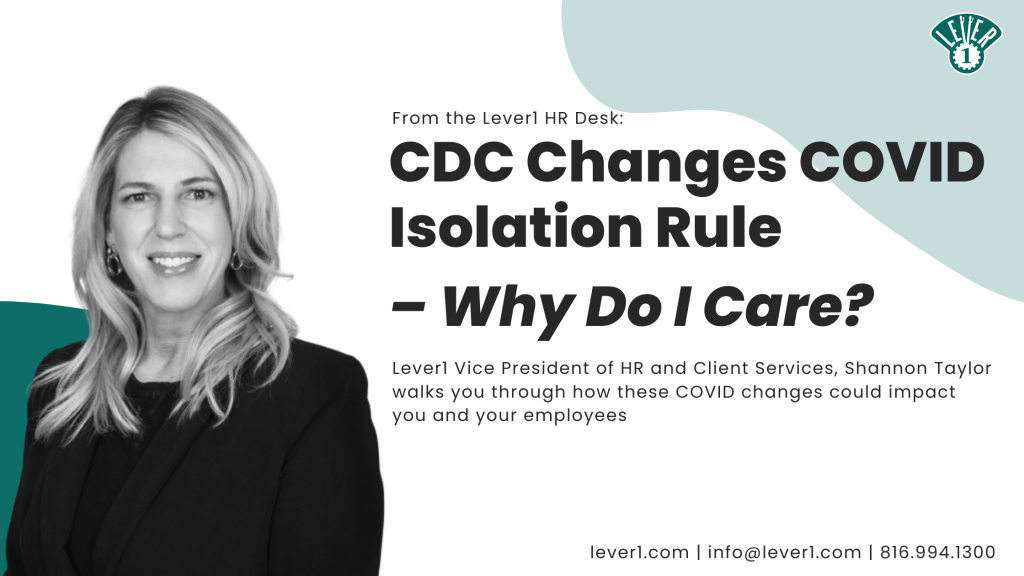
On March 1, 2024, the CDC said it would no longer require a 5-day isolation period for individuals testing positive for COVID-19. This guidance is contained in “Preventing Spread of Respiratory Viruses When You’re Sick.”
The new CDC guidance applies to individuals experiencing “respiratory virus symptoms that aren’t better explained by another cause,” including fever, chills, fatigue, cough, runny nose, and headache, among others. In such cases, the guidance provides that individuals can resume normal activities when, for at least 24 hours, both of the following are true:
- The individual’s symptoms are getting better overall, and
- The individual has not had a fever (or had a fever but has been fever-free for at least 24 hours) and is not using fever-reducing medication.
After resuming normal activities, the guidance recommends taking precautions over the next 5 days, including “taking additional steps for cleaner air, hygiene, masks, physical distancing, and/or testing when [the individual] will be around other people indoors.”
Individuals who test positive for a respiratory virus but never had symptoms are not subject to any isolation recommendation under the new guidance, but are advised to take precautions as noted above for the 5 days following the positive test.
So why do I care about this? It matters because many states, such as NY, have a COVID-19 sick leave law, which requires employers to provide at least 5 or 14 calendar days (depending on employer size) of (in most cases paid) sick leave for isolation or quarantine related to COVID-19, separate and apart from any other sick time or other paid time off the employer may already provide. Under the CDC’s previous isolation guidelines, NY employees testing positive for COVID-19 were entitled to sick time for the 5-day isolation period. Employees whose symptoms continued beyond the initial 5-day period may have been eligible for additional COVID-19 sick leave, depending on their employer’s size.
Now, under the new CDC guidance, the amount of NY COVID-19 sick time an employee may be eligible for will be case-dependent upon: (1) whether the employee is experiencing any symptoms (as an employee experiencing no symptoms is now under no advisement to isolate); and (2) how long the employee’s symptoms (including, any fever) last. You will need to check other state laws to see what other leave obligations you may have to your employees.
Shannon Taylor | Vice President of Human Resources and Client Services
Shannon brings over 20 years of experience in all areas of HR including HR Strategy, Recruitment and Employee Management. She has experience serving as a resource and advisor to clients on all areas of HR, including performance management, onboarding, terminations, handbook creation and updates, training, investigations, complaints and company P&P.

